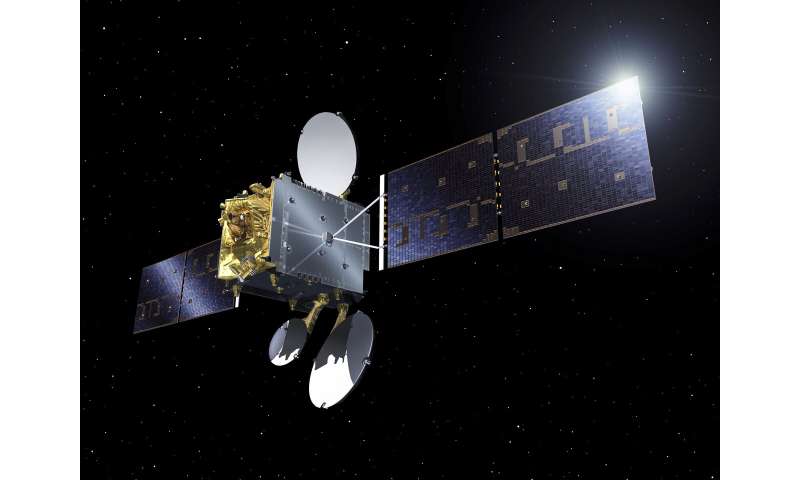Data-relay satellite ready for service
by Science X staff
The second node in the most sophisticated laser communication network ever designed is ready to go into service.
Dubbed the "SpaceDataHighway", the European Data Relay System (EDRS) helps Earth-observing satellites to transmit large quantities of potentially life-saving data to Europe in near-real time.
Its second satellite, EDRS-C, has now completed its in-orbit commissioning review and is ready to start service.
Launched on 6 August 2019, EDRS-C has since manoeuvred into its geostationary orbit some 36 000 kilometres above Earth where it has been thoroughly tested during the past six months.
This geostationary position enables the communication satellite to maintain an almost constant connection with Earth-observation satellites that are closer to the planet's surface and circle the Earth every 90 minutes or so.
The EDRS satellites use lasers to communicate with Earth-observation satellites and beam their data back to Europe in almost real time. Without them, there would be delays of up to 90 minutes.
The in-orbit commissioning review demonstrated that all EDRS-C systems perform well and that EDRS-C can link with Sentinel 2B, one of the Earth-observation satellites from the European Union's Copernicus programme.
EDRS-C is now being tested with all four Sentinel satellites ahead of its user commissioning review, which is due to take place in a few weeks.
Following the user commissioning review, EDRS-C will join its sister satellite, EDRS-A, as an operational node of the EDRS constellation. The latter was launched in January 2016 and has been providing communications services to the Copernicus programme since November 2016.
EDRS-A is due to relay information from the International Space Station, once the required equipment is installed on the outside of its Columbus laboratory.
EDRS is a new, independent European satellite system, and is a Partnership Project between ESA and operator Airbus as part of ESA's efforts to federate industry around large-scale programmes, stimulating technology developments to achieve economic benefits.
The EDRS-C satellite platform was built by OHB System in Germany and the laser terminals were developed by Tesat-Spacecom and the DLR German Space Administration.
Provided by European Space Agency